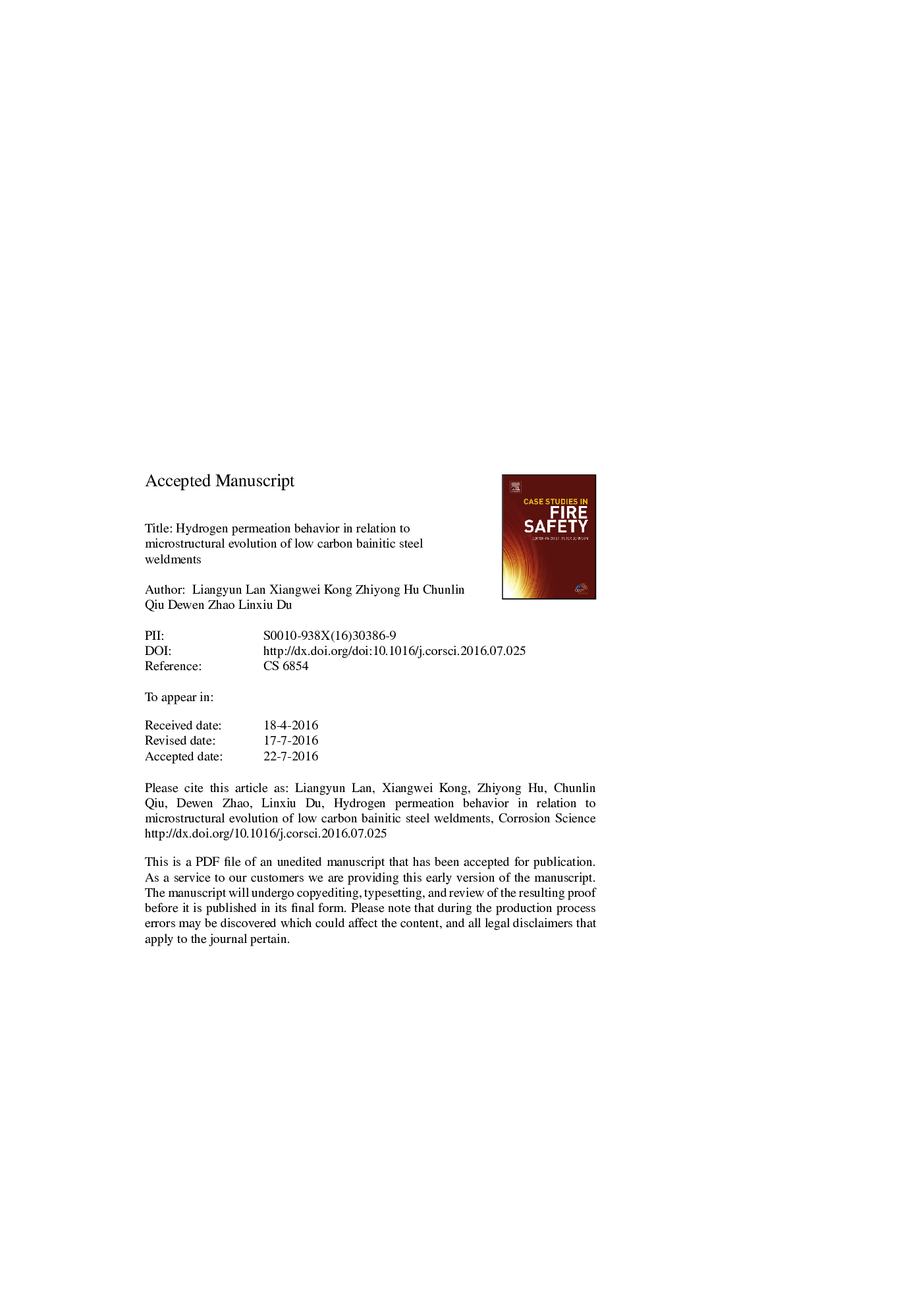| Article ID | Journal | Published Year | Pages | File Type |
|---|---|---|---|---|
| 5440110 | Corrosion Science | 2016 | 37 Pages |
Abstract
The microstructures of high strength bainitic steel weldments were characterized, and their hydrogen permeability was investigated by the electrochemical permeation technique. The effective diffusion coefficient in the welded joint increases with heat input, while the hydrogen concentration at the sub-surface decreases with increasing heat input, mainly due to coarsening grain and inclusion sizes. Compared with as-welded specimens, the tempered membranes have lower effective diffusion coefficient and higher density of hydrogen traps due to newly formed carbides acting as hydrogen trapping sites that are derived from the decomposition of martensite-austenite constituents. These were further confirmed by the partial permeation technique.
Related Topics
Physical Sciences and Engineering
Materials Science
Ceramics and Composites
Authors
Liangyun Lan, Xiangwei Kong, Zhiyong Hu, Chunlin Qiu, Dewen Zhao, Linxiu Du,
